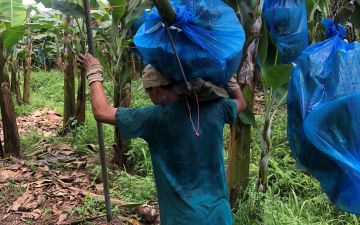Annually, an average 115 million tons and $2 billion of bananas are consumed around the globe, making it one of the top-selling foods on Earth. Bananas are the primary export of Costa Rica, and the Regional Institute of Studies of Toxic Substances (IRET) reports that the country applies the highest rate of pesticides in the world at approximately 40 lbs. per hectare of land.
In comparison, China applies 37 lbs. per hectare and the United States, which consumes half of the bananas produced in Costa Rica, applies only 6 lbs. per hectare.
Research shows the massive volume of pesticide application is associated with adverse health effects in workers including sterility and infertility, cancer, and neurodevelopmental disorders ranging from ADHD to depression. This project explores the relationship between the country’s economic dependence on agriculture and farm workers' exposure to pesticides.
With the world’s population expected to skyrocket by the billions in the next 20 years, the demand for bananas will only continue to grow. Understanding the working conditions of those who provide bananas to the world will help consumers better understand their enormous stake in this global industry.


